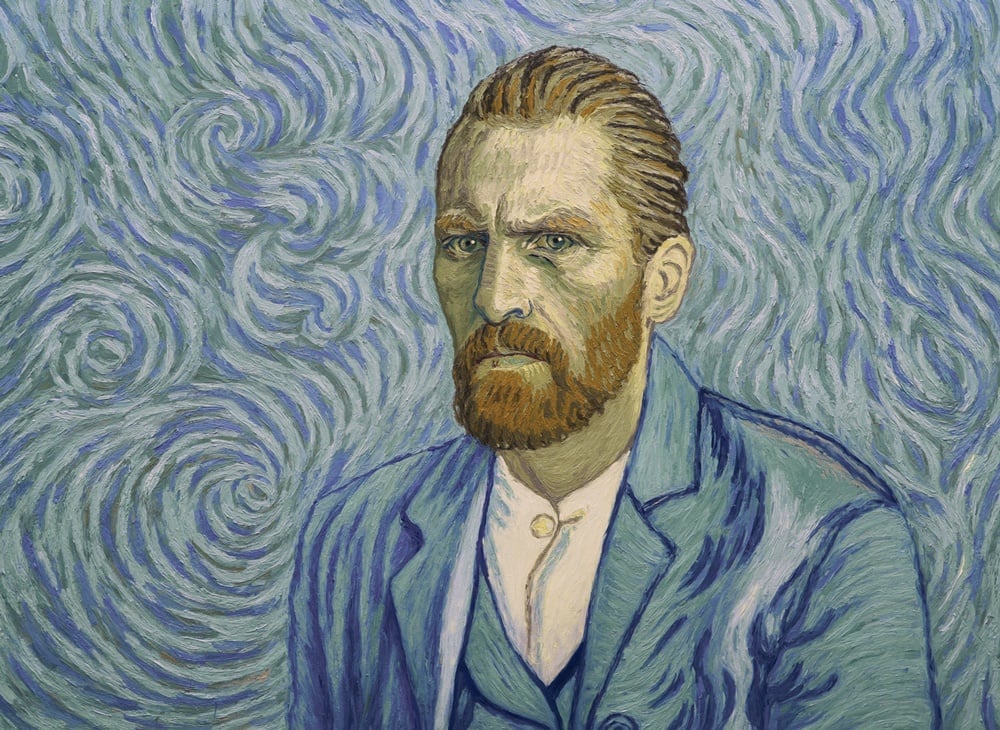Art World
How Two Directors, 125 Artists, and Some ’Crazy-Rich’ Van Gogh Fans Made ‘Loving Vincent’ the World’s First Painted Feature Film
It required hundreds of artists, almost 1,000 canvases, and an A-list cast.

It required hundreds of artists, almost 1,000 canvases, and an A-list cast.

Six years ago, Dorota Kobiela and Hugh Welchman hatched a crazy idea: to create the world’s first painted feature film. The subject? The final days of Vincent van Gogh. They knew it would be a tough sell.
Hundreds of paintings, many unsuccessful meetings with film financiers, and $5 million later, the film Loving Vincent makes its New York premiere today. The animation-style, stop-motion film is made entirely from real oil paintings; the result looks as if Van Gogh’s vivid figures have come to life. The story considers what might have happened if Van Gogh did not kill himself, but was in fact murdered.
The journey to make the film was an uphill battle. “When we decided we were going to paint an entire film, we thought that was going to be the toughest part,” Welchman tells artnet News. But instead, “among the hardest challenges was raising the money for it.”
Film financiers are notoriously risk-averse, and this project had no industry comparables to speak of. Potential backers doubted the film would finish in its projected two-year time frame and were suspicious of the novel format.
“Film financiers were very interested in what we’re doing and they know Van Gogh has a lot of fans,”Kobiela says. “They wanted numbers and information about other films that had been done this way. But since no one has ever done this kind of film, we didn’t have any numbers.”
In the end, they managed to create the film for $5 million, a modest sum by Hollywood standards. “This film wouldn’t have gotten made if we didn’t have crazy-rich individuals who love Vincent and took a gamble,” Welchman says.
The plot centers around Armand Roulin (played by Douglas Booth)—the son of Van Gogh’s friend, postman Joseph Roulin (played by Chris O’Dowd)—who travels to Auvers-sur-Oise in search of the real story of the artist’s death. Along the way, he meets a wide cast of characters, including the artist’s physician Dr. Gachet (played by Jerome Flynn), Gachet’s daughter, Marguerite (played by Saiorse Ronan), and the keeper of the inn where the artist stayed (Eleanor Tomlinson).
Why tell the story in paintings? “You can’t tell Vincent’s story without his paintings,” Kobiela says. “Van Gogh completely dedicated the last nine years of his life to his artistic quests.”
But the logistics were not quite as simple as the concept. It took the duo four years to develop the proper technique—only then could they begin the two-year production process. Loving Vincent was first shot as a live action film with actors; then, the directors recruited an army of artists to paint each frame in the style of Van Gogh. All told, 125 artists worked on the film. “The most we had working at any one time was 97,” Welchman says.
Most of the team—a unit of up to 66 people—worked in Gdańsk at a studio near the filmmakers’ home in northern Poland. Smaller groups of painters worked in Bratislav, in western Poland, and Athens.
The total number of paintings required to create the hour-and-a-half-long film is staggering. Each shot was translated into one painting—though some longer shots involved multiple canvases—which the artists updated frame by frame according to the action in the shot.
To capture changing backgrounds, facial expressions, and movement, each canvas was re-painted an average of 76 times. Between them, the artists executed a total of 65,000 frames in oil paint. (Each second of the film is equivalent to 12 frames.)
Surprisingly, however, the directors said this process went relatively smoothly. “Animation is all about preparation. We spent a lot of time preparing,” Welchman says.
At the end of shooting, the directors were left with 845 paintings, each depicting the last frame of each shot. (While many of those involved in the film got to take a painting home, several canvases are now available for purchase on the film’s website for prices ranging from around $1,200 to more than $9,500.)
The film has been shown at several festivals, including Telluride earlier this month and the Annecy Film Festival in France this past June, where it got a 10-minute standing ovation, according to Welchman. Following today’s New York premiere, the film will open on a rolling basis at theaters throughout the US.
The movie has also gotten the stamp of approval from the Van Gogh Museum in Amsterdam, which helped with research and plans to screen the film this fall and support wider distribution in the Netherlands. The Musée d’Orsay in Paris, to which the real Dr. Gachet gifted 26 Van Gogh paintings, is also planning to show it, Welchman says.
Kobiela, who pored over hundreds of Van Gogh letters during the research process, says she couldn’t imagine exploring Van Gogh’s story any other way. In a letter Van Gogh wrote just one week before his death, he said, “We cannot speak other than by our paintings.”
See the trailer here: